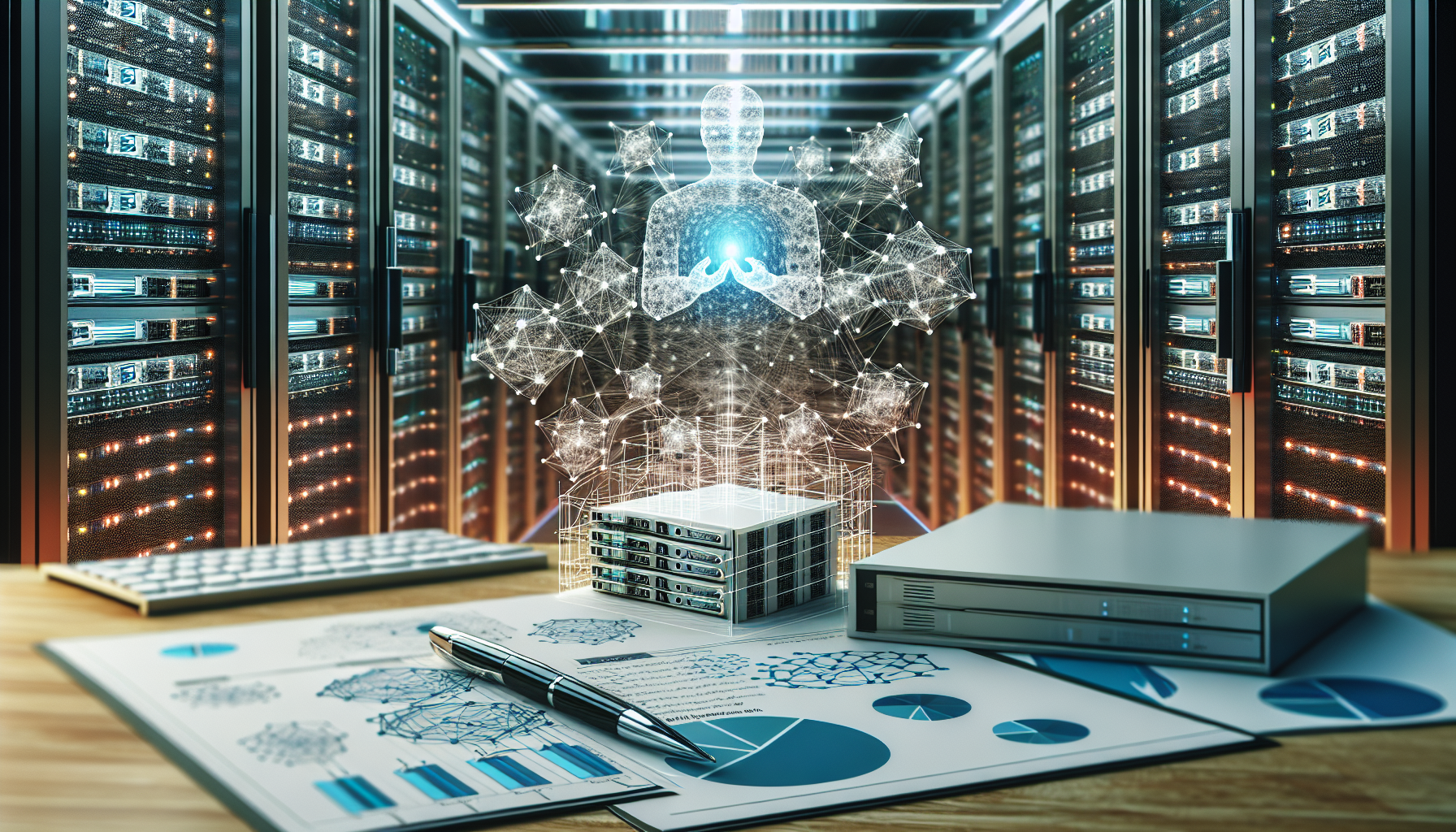## Exploring the Influence of AI on Data Center Design
With their integral role in facilitating internet, cloud computing, and enterprise services, data centers have evolved into highly intricate systems. However, implementing artificial intelligence (AI) into these infrastructures introduces several unique challenges. AI has the potential to vastly improve the functioning of these facilities, but its integration requires data center owners to factor in new considerations into their designs.
The Need for Enhanced Cooling
AI significantly strengthens digital data center security by introducing advanced anomaly detection and automatic threat response mechanisms. But these enhancements come at a cost; AI requires substantial energy and information to function, necessitating more rigorous cooling solutions.
Data centers may need to transition from air-based cooling to more robust options like liquid or immersion cooling. These cooling methods can reduce facility power usage by up to 50%. However, incorporating such strategies necessitates careful planning and can be expensive for established centers.
To circumvent the need for a complete overhaul, Microsoft has developed a custom server rack that handles cooling needs and optimizes space. While liquid cooling already allows data centers to place racks closer together, this innovation could further minimize facility dimensions.
Physical server security also needs to account for cooling requirements. Thick walls of metal or concrete can cause machinery to overheat. Therefore, expanded metal cages, which promote air circulation through diamond-shaped openings and are easily movable, are becoming the preferred choice.
Minimizing Equipment Redundancy with AI
AI helps data centers decrease equipment redundancy by facilitating smarter resource allocation and predictive analytics. By analyzing data patterns and operational demands, AI can accurately predict capacity and performance needs. This allows for the optimization of existing infrastructure rather than over-provisioning for peak demand.
This predictive capability enables data centers to scale resources according to their needs, reducing the need for redundant equipment. As a result, AI simplifies design, minimizes unnecessary capital expenditure, and promotes sustainable practices by decreasing electricity usage and e-waste.
Importance of High-Quality Materials
AI’s substantial operational requirements necessitate updated housing. Cheap materials can result in frequent downtime for maintenance and unnecessary expenditure on replacements. High-quality components can promote better air quality and avoid the emission of dangerous gases and particles in extreme heat.
The Future of AI in Data Centers
Despite the initial cost of implementation, the complexity of integrating AI systems, and the need for skilled personnel, the future of AI in data centers is promising. AI’s potential to optimize energy use, automate maintenance, and enhance security sets a new standard for infrastructure.
Organizations need to delve deeper into AI’s transformative power in data center design by exploring the latest technologies and staying updated with industry developments. This active engagement will enhance their understanding and enable them to contribute to the evolving landscape of data center innovation.
Conclusion
The journey of integrating AI into data centers presents a multitude of challenges, ranging from cooling needs to equipment redundancy. However, the benefits outweigh the hurdles. As technology continues to evolve, it is clear that AI will play a pivotal role in shaping the future of data center design, paving the way for more efficient, resilient, and sustainable infrastructures.
Questions & Answers
What are some challenges of incorporating AI into data center designs?
Incorporating AI into data centers can be challenging due to the increased energy usage, the need for enhanced cooling systems, and the demand for high-quality materials for housing.How does AI help in reducing equipment redundancy in data centers?
AI reduces equipment redundancy by enabling smarter resource allocation and predictive analytics. It can accurately forecast capacity and performance needs by analyzing data patterns and operational demands.Why is the quality of materials important in AI-integrated data centers?
High-quality materials are crucial in AI-integrated data centers as they can withstand greater loads, prevent frequent downtime for maintenance, and avoid the emission of dangerous gases and particles in extreme heat.What is the future outlook of AI in data centers?
Despite the challenges, the future of AI in data centers is promising. AI’s potential to optimize energy use, automate maintenance, and enhance security sets a new standard for infrastructure in the modern world.How can organizations keep up with the evolving landscape of AI in data center design?
Organizations can keep up by actively exploring the latest AI technologies, participating in relevant discussions, and staying updated with industry developments.